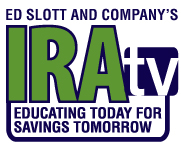Do you have a will? Most people who need one, realize that they need one. Most of those people actually do something about it and put a will in place for their estate. But what is your will really doing for you?
 A will determines who gets your probate property, but just how much of your estate is probate property (and to that end, what is probate property)? If you are married, most of your estate is probably NOT probate property. For instance, real estate is often owned jointly with rights of survivorship. If so, it will pass to the surviving spouse and never go through your will. The same is true of your bank accounts and investment accounts if they are titled jointly with rights of survivorship. They will go to the survivor and not through your will.
A will determines who gets your probate property, but just how much of your estate is probate property (and to that end, what is probate property)? If you are married, most of your estate is probably NOT probate property. For instance, real estate is often owned jointly with rights of survivorship. If so, it will pass to the surviving spouse and never go through your will. The same is true of your bank accounts and investment accounts if they are titled jointly with rights of survivorship. They will go to the survivor and not through your will.
Your retirement accounts also do not go through your will…or at least they shouldn’t. They pass to whoever you have named on your beneficiary form, so unless you’ve named your estate as the beneficiary on the beneficiary form or you failed to name a beneficiary and the IRA documents default to your estate - both of which are big no-nos - your retirement accounts will not be affected by your will. Other assets with beneficiary forms, such as life insurance policies and annuities also do not pass through your will. The estate is generally not a good choice of beneficiary for any of these assets.
That could leave very little to pass through your will. In many situations, only your personal property, such as a car, jewelry or collectibles will pass through your will. Assets that are titled in your name only also pass through your will.
This means that you need to make sure that you not only have a will in place, but that you also correctly title your other assets so that they go where you want them to go. If someone dies or gets a divorce, you may need to update the names on real estate, bank accounts, investment accounts, and assets with beneficiary forms, such as retirement accounts, life insurance and annuities. Your will may not take care of how these assets transfer after your death or may transfer them to the wrong beneficiaries. There seems to be an app for everything these days, do you suppose there is an app for this?
- By Beverly DeVeny and Jared Trexler
 A will determines who gets your probate property, but just how much of your estate is probate property (and to that end, what is probate property)? If you are married, most of your estate is probably NOT probate property. For instance, real estate is often owned jointly with rights of survivorship. If so, it will pass to the surviving spouse and never go through your will. The same is true of your bank accounts and investment accounts if they are titled jointly with rights of survivorship. They will go to the survivor and not through your will.
A will determines who gets your probate property, but just how much of your estate is probate property (and to that end, what is probate property)? If you are married, most of your estate is probably NOT probate property. For instance, real estate is often owned jointly with rights of survivorship. If so, it will pass to the surviving spouse and never go through your will. The same is true of your bank accounts and investment accounts if they are titled jointly with rights of survivorship. They will go to the survivor and not through your will. Your retirement accounts also do not go through your will…or at least they shouldn’t. They pass to whoever you have named on your beneficiary form, so unless you’ve named your estate as the beneficiary on the beneficiary form or you failed to name a beneficiary and the IRA documents default to your estate - both of which are big no-nos - your retirement accounts will not be affected by your will. Other assets with beneficiary forms, such as life insurance policies and annuities also do not pass through your will. The estate is generally not a good choice of beneficiary for any of these assets.
That could leave very little to pass through your will. In many situations, only your personal property, such as a car, jewelry or collectibles will pass through your will. Assets that are titled in your name only also pass through your will.
This means that you need to make sure that you not only have a will in place, but that you also correctly title your other assets so that they go where you want them to go. If someone dies or gets a divorce, you may need to update the names on real estate, bank accounts, investment accounts, and assets with beneficiary forms, such as retirement accounts, life insurance and annuities. Your will may not take care of how these assets transfer after your death or may transfer them to the wrong beneficiaries. There seems to be an app for everything these days, do you suppose there is an app for this?
- By Beverly DeVeny and Jared Trexler
























